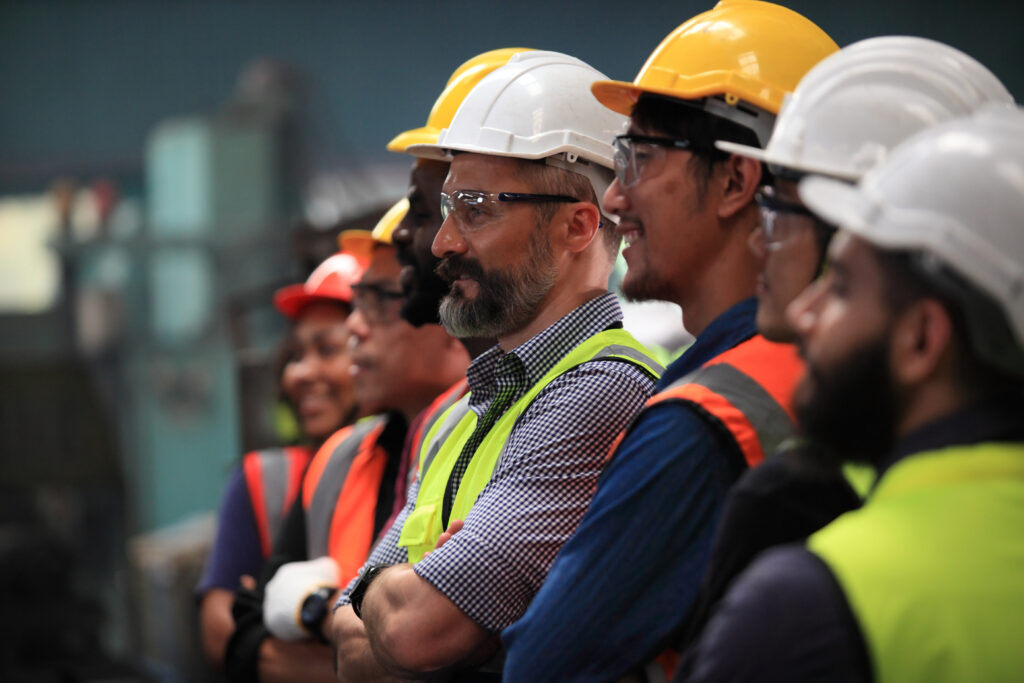1. Business Challenge
The Engine Room was engaged by leaders of the Engineering & Construction Services department within a major utility to support and drive the strategic pursuit of increased efficiencies and cost reductions in the output of Engineering deliverables. The accountable Director and VP shared a common vision of a leaner, more effective Engineering organization led by a high-performing leadership team equipped with the skills, tools, and mindset necessary to drive sustained operational and cultural improvement. In pursuit of this vision, the Engine Room engagement focused on multiple objectives, including fostering greater transparency, improved communication, strengthened leadership capability, and intentionally cultivating a strong culture of accountability. A 20% reduction in the duration and cost of producing Engineering deliverables provided an objective target, creating the opportunity for the transparent tracking of progress.
As part of the engagement, the Engine Room was invited to support and guide the implementation and roll-out of a state-of-the-art resource scheduling software solution that would bring increased transparency and effectiveness to departmental resource scheduling practices. At the same time, the Director and VP embraced the Engine Room’s recommendation to supplement their efforts with targeted and customized leadership development training for all Engineering managers which focussed on building accountability and improved communication throughout the department. As part of this leadership development, the Engine Room recommended a focused effort to enhance the department’s Management System, which included training and coaching designed to elevate the quality of the department’s Monthly Business Review framework and practices.
(Note: The Engine Room defines the Management System in an organization as the regular cadence of management activities that, in combination, allow the company to track their operational performance, share and discuss performance trends, and develop tactical action plans to address weaknesses and optimize performance over the long term. That typically includes elements such as scorecards, KPIs, dashboards, and business review meetings with leaders and managers responsible for different areas of the business.)
2. Actions Taken
| Operational Efficiency Initiative: The Engine Room collaborated closely with the Director and Senior Managers to implement a multi-faceted effort designed to drive, measure, and track the department’s pursuit of their 20% duration and cost reduction target. In addition to supporting this initiative as a strategic partner at the departmental level, the Engine Room partnered with several teams within the department in facilitating the identification, design, and execution of multiple localized operational efficiency improvement initiatives. |
| Technology Implementation Support: The Engine Room aligned with a very capable internal software implementation and support team who had embarked upon the rollout of a new resource scheduling software across the department. The Engine Room partnered with this team throughout the rollout from pilot stage to full implementation, and played a lead, support, or consultative role in the areas of software utilization strategy, software implementation strategy, process/workflows development, and change management and communications. The Engine Room also provided consultative support in the automation of multiple process steps and the development of dashboards. Leaders were trained in how to use the new dashboards to support leadership conversations with direct reports that focus on continuous improvement and the desired culture, behavior, and business outcomes. |
| Leadership Development Training with a focus upon building a strong Culture of Accountability: Through periodic group sessions, the Engine Room worked with all departmental leaders on strengthening several core leadership skills and capabilities. Leaders participated in sessions that outlined the clear, actionable steps required of leaders when building a strong culture of accountability within their team. Leaders were also aligned around the key principles of effectively cascading communications throughout their department. Between group development sessions, the Engine Room spent one-on-one time with each leader within the department in personalized coaching sessions designed to reenforce learnings and support leaders as they navigate the day-to-day leadership challenges that they encounter in the execution of their role. |
| Enhancing the Business Review Processes: While the department had an existing routine of monthly management meetings, these meetings were enhanced to incorporate the Engine Room’s business review principles. Leaders were guided towards a more forward-looking focus, ideally with 60-75% of their business review dedicated to discussing actions to mitigate risks, capture opportunities, and achieve future goals. Through group learning sessions and individual coaching, leaders were coached to utilize the Business Review Meeting as a strategic opportunity to demonstrate 1) a deep understanding of their team and division, 2) their leadership style, skills, and capabilities (including presentation skills), and 3) their forward-looking strategic leadership thinking, planning, and actions. |
3. Business Results
The collective actions taken in pursuit of the 20% duration and cost reduction target led to significant and sustainable improvements within the department:
| 20% Duration and Cost Reduction Target: at the conclusion of the Engine Room engagement, the department had the tools, tracking processes, and management systems – including Monthly Business Reviews – in place to continue their pursuit of the 20% reduction target. An increasing number of Engineering deliverables were hitting and exceeding the 20% target, with abundant opportunities for continued progress towards their goal. Importantly, the enhanced leadership capability and alignment throughout the department had empowered all leaders with the skills to continue to build increased levels of accountability in the pursuit of higher efficiency within all workflows. |
| Operational Visibility and Efficiency: The successful roll-out of the new resource scheduling software created increased visibility into this key aspect of core workflows throughout the department. This visibility facilitated the use of data-backed analysis and decision-making relating to resource scheduling, workloads, team planning, and org design in ways that were previously inaccessible to leaders throughout the department. This visibility also revealed opportunities for improving efficiencies within teams and workflows. The new software, data, dashboards, and related coaching provided leaders with the platform upon which to have intentional, data-backed performance conversations with their direct reports in pursuit of continuous improvement and higher performance. |
| Enhanced Accountability: The Engine Room’s focus upon the leader’s role in building a strong culture of accountability created the foundation for leaders to be more intentional in their leadership actions. Leaders were empowered to set the right expectations, enable the success of their people, effectively monitor performance, and drive continuous improvement by consistently taking appropriate and effective leadership actions in response to their observations. |
4. Conclusion
The cumulative impact of all Engine Room actions built a platform upon which the department continues to pursue increased efficiency, transparency, affordability, accountability, and continuous improvement. Transparency and visibility into overall use of departmental resources has significantly improved. Efficiency gains – with objective measurement in pursuit of the 20% duration and cost reduction – are being actively tracked, celebrated, and used as fuel for further efficiency insights. And ‘accountability’ within the department is now seen as a necessary and positive ingredient in the recipe for high-performance.
The marked shift in culture towards continuous improvement and a high-performance leadership mindset illustrate how The Engine Room’s multi-faceted approach to driving efficiency gains leads to improvements in the key drivers of organizational performance, such as accountability, transparency, communication, and effective leadership practices.




